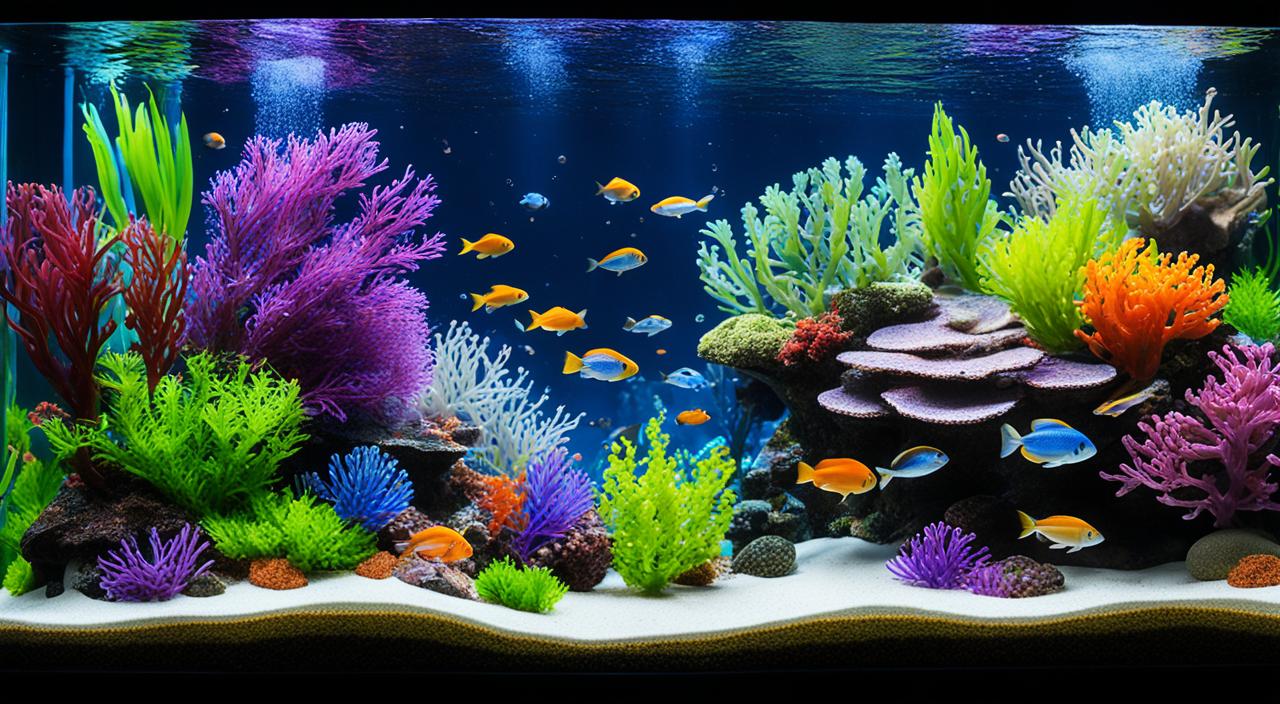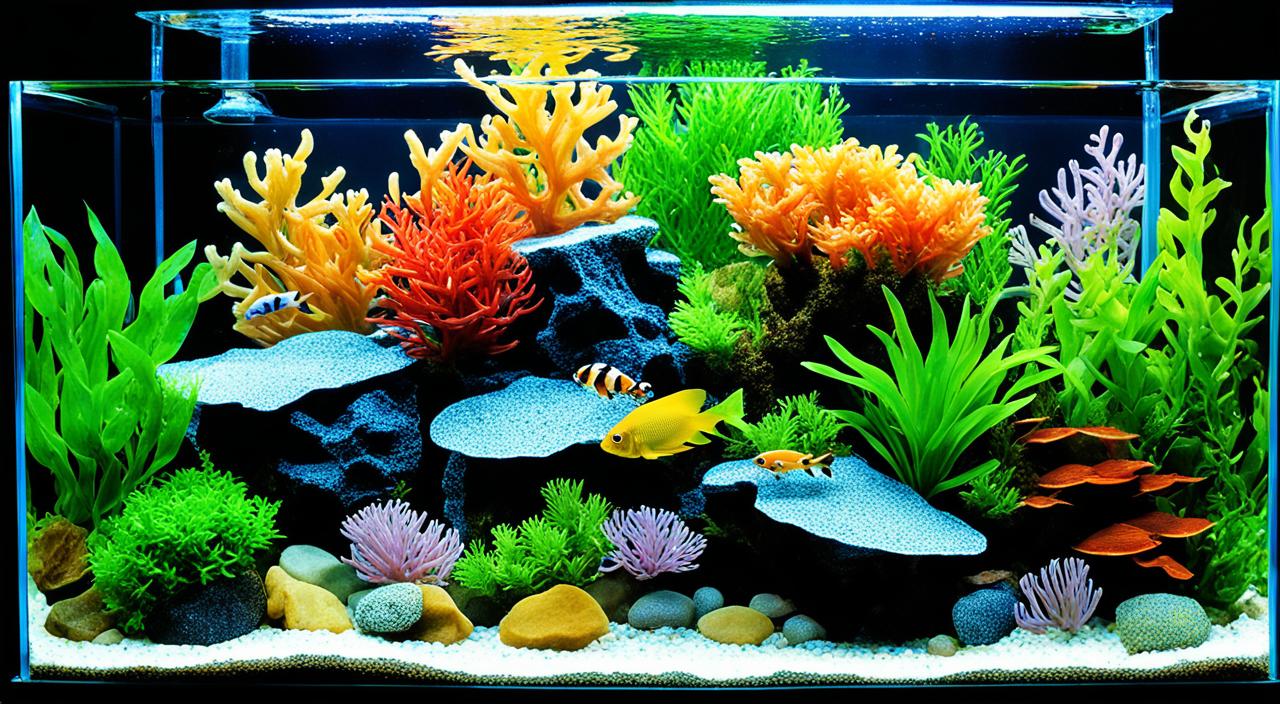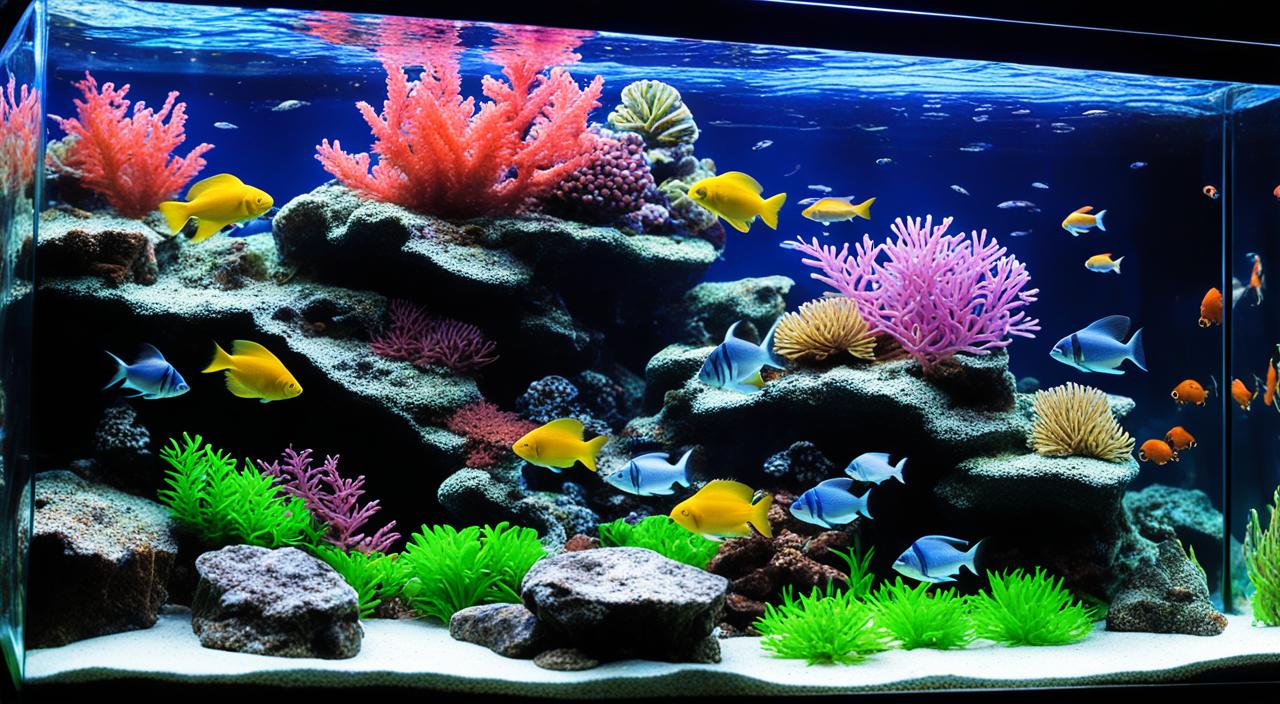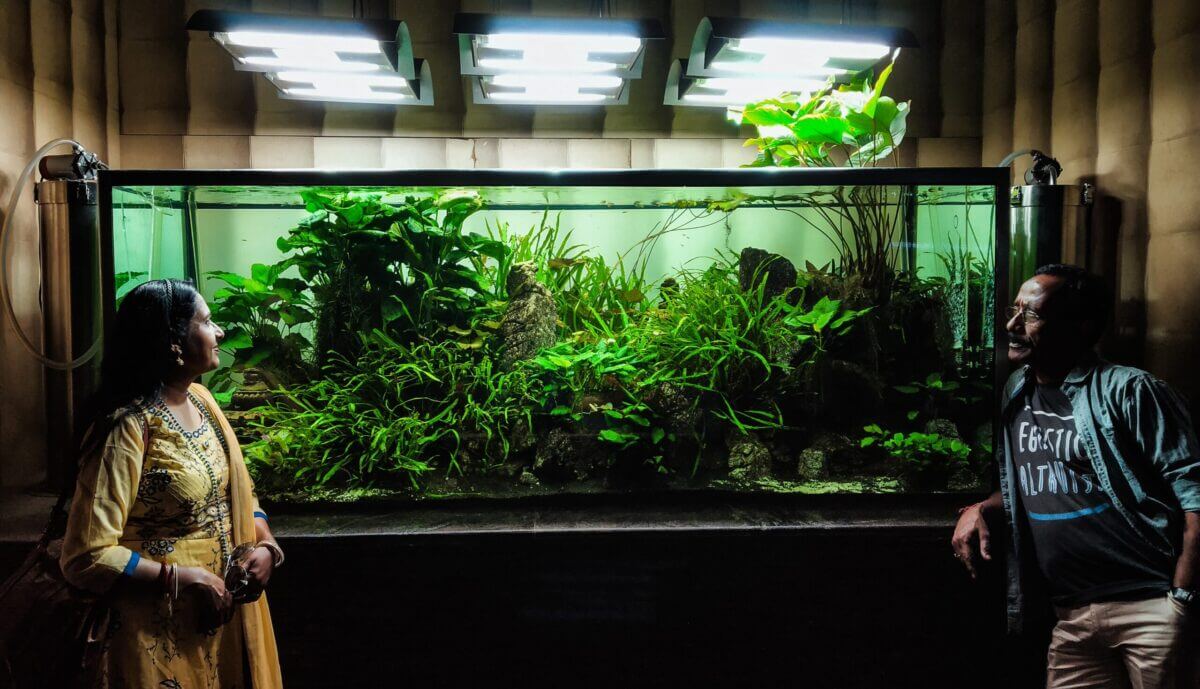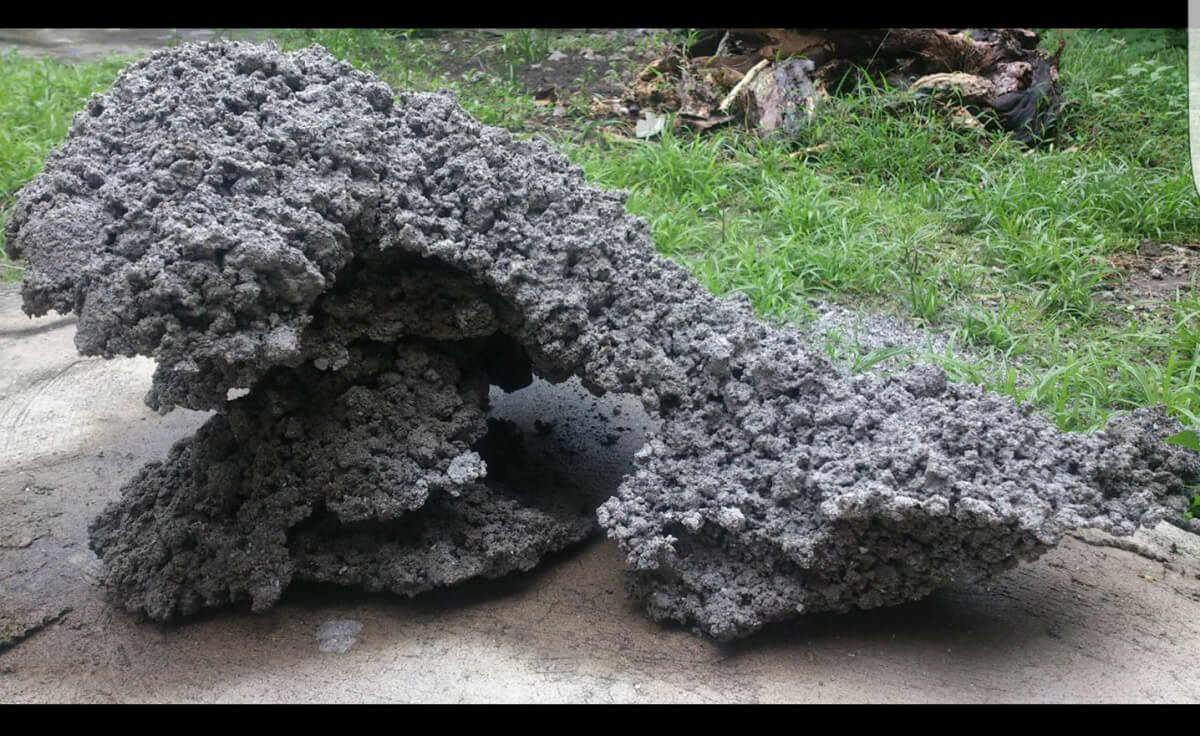Are you ready to dive into the enchanting world of aquariums but feel lost in a sea of information? Imagine transforming an ordinary space into an extraordinary underwater oasis with your 20 gallon tank. Does the thought of creating a miniature aquatic paradise excite you, but you’re unsure where to start? Let’s embark on this aquatic adventure together, turning your dream into a breathtaking reality.
Key Takeaways:
- Setting up a 20 gallon tank is a great way to start your aquarium journey as a beginner.
- Choosing the right equipment, including the aquarium, filtration system, lighting, and heating, is crucial for creating a suitable environment for aquatic life.
- Proper positioning of your tank and understanding the nitrogen cycle are essential for a successful setup process.
- Maintaining water quality and regular maintenance are key to your aquarium’s thriving.
- Exploring different aquarium setups and understanding the needs of fish species and plants will help you make informed decisions as you progress in your aquarium journey.
Introduction to Aquarium Keeping
Embarking on the journey of aquarium keeping is an exciting endeavour that allows you to create a vibrant underwater world in your own home. Whether you are a nature enthusiast, an avid fish lover, or simply looking for a unique and soothing decorative element, setting up your first aquarium offers a captivating experience.
When choosing the right tank for beginners, a 20 gallon aquarium is an excellent option that balances manageability and versatility. Let’s explore why the 20 gallon tank is famous among novice aquarists.
Why Choose a 20 Gallon Tank?
Size matters in aquariums, and a 20 gallon tank strikes the perfect balance for beginners. Here are some reasons why:
- Manageable size and ease of maintenance: A 20 gallon tank is smaller than more extensive options, making it easier to handle and maintain. As a beginner, this manageable size allows you to gain hands-on experience without feeling overwhelmed.
- Stable environment and forgiving water conditions: A larger tank, like the 20 gallon, provides a more stable and forgiving environment for fish. It offers a higher volume of water, which helps dilute any changes in water parameters and ensures a more stable ecosystem.
- More room for fish: The larger size of a 20 gallon tank provides ample space for fish to swim and explore. This creates a more natural habitat and allows for a more engaging experience as you observe your fish in a spacious environment.
- Versatility in fish selection: A 20-gallon tank can accommodate a variety of fish species. It is suitable for small community fish, such as tetras and guppies, and medium-sized species like dwarf cichlids. This versatility allows you to explore different fish combinations according to your preferences.
With its manageable size, stability, and versatility, a 20 gallon tank is an ideal choice for beginners venturing into the world of aquarium keeping. It provides a solid foundation for developing your skills and creating a thriving underwater ecosystem that brings joy and tranquillity to your surroundings.
Essential Equipment for Your 20 Gallon Tank
Setting up your 20-gallon tank requires carefully considering the essential equipment to create a thriving aquatic ecosystem. From selecting the right aquarium to providing the ideal environment for your fish and plants, each aspect plays a crucial role in the success of your underwater world.
Selecting the Right Aquarium
When choosing an aquarium for your 20 gallon tank, consider factors such as size, material, and location. Glass tanks are known for their durability and excellent clarity. In contrast, acrylic tanks offer lightweight and shatterproof options. Select a tank size that fits your space and allows easy maintenance. Ensure the tank is placed away from direct sunlight and on a stable surface that supports its weight.
Check out the more detailed article: Choosing the Right 20 Gallon Tank: Materials, Dimensions, and Types.
Filtration Systems: A Must-Have
A reliable filtration system is essential for maintaining a healthy and balanced aquarium ecosystem. Various types of filters are available, including hang-on-back (HOB) filters, canister filters, and sponge filters. Choose a filtration system appropriate for the size of your tank and the needs of your fish species. Regular filter maintenance and cleaning are necessary to ensure optimal performance and water quality.
Lighting and Heating: Setting the Environment
Proper lighting is crucial for plant growth and the overall aesthetics of your aquarium. Select a lighting system based on the specific needs of your plants and fish. Additionally, install a reliable heater to maintain a consistent and appropriate temperature, particularly if you have tropical fish. Monitor and adjust the lighting and heating settings to create an ideal environment for your aquatic inhabitants.
Substrate and Decorations: Creating a Habitat
The substrate and decorations in your 20 gallon tank contribute to the overall aesthetics and functionality of the aquarium. Choose a suitable substrate, such as gravel or sand, based on the needs of your fish and plants. Consider incorporating live plants into your tank as they provide aesthetic appeal and contribute to a healthier ecosystem. Select decorations that mimic natural aquatic habitats, such as rocks, driftwood, and caves, to offer hiding places and shelter for your fish. Ensure that any decorations used are safe for the fish and compatible with your tank’s water parameters.
The Initial Setup Process
In this section, we will explore the critical steps involved in the initial setup of your aquarium. Proper tank positioning, understanding the nitrogen cycle, and maintaining water quality are crucial to creating a thriving aquatic environment. Let’s dive in!
Positioning Your Tank for Success
Choosing the right location for your tank is essential. Please remove it from direct sunlight and drafts to prevent temperature fluctuations and algae growth. The tank must also be placed on a sturdy and level surface to avoid accidents and instability. When determining the tank’s visibility, consider the aesthetics and ease of viewing, and leave enough space around it for maintenance and access to necessary equipment.
The Nitrogen Cycle: Preparing for Fish
Understanding the nitrogen cycle is crucial for establishing a healthy aquarium ecosystem. Introduce beneficial bacteria into the tank to convert harmful ammonia from fish waste into nitrite and nitrate. This process, known as cycling, allows the tank to develop a stable environment before adding fish. Monitor ammonia, nitrite, and nitrate levels using a water test kit during the cycling process to ensure a safe and suitable habitat for your future aquatic inhabitants.
Water Quality and Maintenance
Maintaining optimal water quality is vital for the health and well-being of your fish. Monitor temperature, pH levels, ammonia, nitrite, and nitrate to ensure they are within the appropriate range for your chosen fish species. Implement a regular water change schedule to remove waste and replenish essential minerals. It’s also important to clean and maintain your filtration system regularly to ensure its effective operation. Following these practices, you can hold a clean and balanced aquatic ecosystem for your underwater friends.
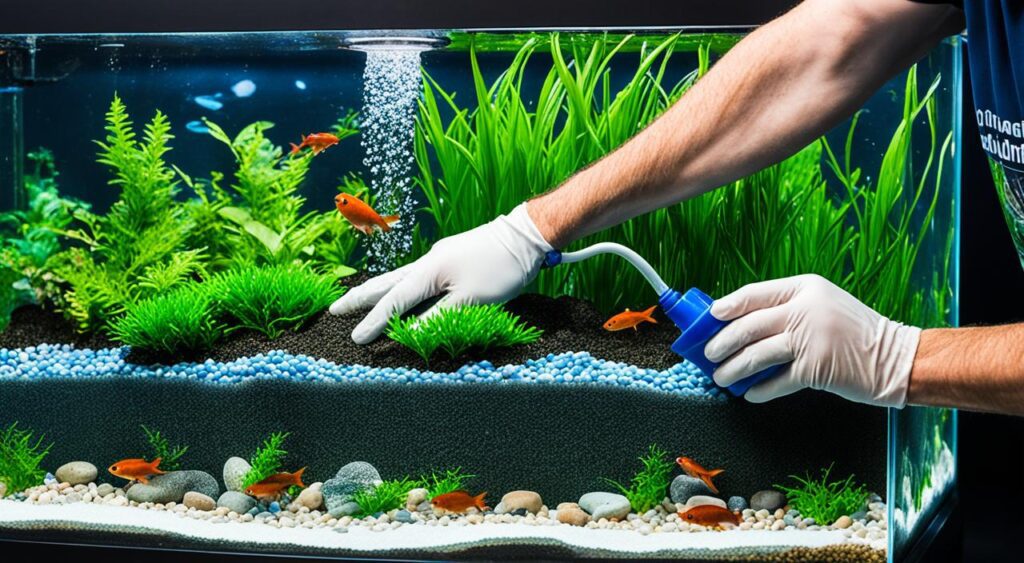
Next Steps in Your Aquarium Journey
Now that you have successfully set up your 20-gallon tank and created a thriving aquatic environment, it’s time to explore the next steps in your aquarium journey. This section will discuss important considerations when deciding between freshwater, saltwater, and planted tank setups and introduce you to the fascinating world of aquatic plants and fish.
Deciding Between Freshwater, Saltwater, and More
As you dive deeper into the aquarium hobby, you may consider expanding your repertoire by exploring different setups. The three main categories are freshwater, saltwater, and a planted tank.
Each setup has unique requirements and challenges, so carefully consider what aligns with your interests and experience level. Take the time to research and understand the specific needs of the fish species and plants you plan to keep in your chosen setup to ensure their well-being.
Need a hand in deciding: Reading this article might help.
Introduction to Aquatic Plants and Fish
Aquatic plants play a crucial role in maintaining a healthy aquarium ecosystem. They provide aesthetic appeal and contribute to water filtration, oxygen production, and habitat creation for fish and other aquatic inhabitants.
When selecting aquatic plants for your tank, consider their care requirements, growth rates, and compatibility with your chosen fish species. Arrange plants of different heights, colours, and textures to create a visually pleasing and harmonious underwater landscape.
Furthermore, it’s essential to select fish species compatible with your chosen aquarium setup and meet the needs of your plants and other inhabitants. When selecting your fish, consider water temperature, pH levels, and behavioural characteristics.
Continue your aquarium journey by exploring various setups and perfecting the art of maintaining a vibrant aquarium ecosystem.
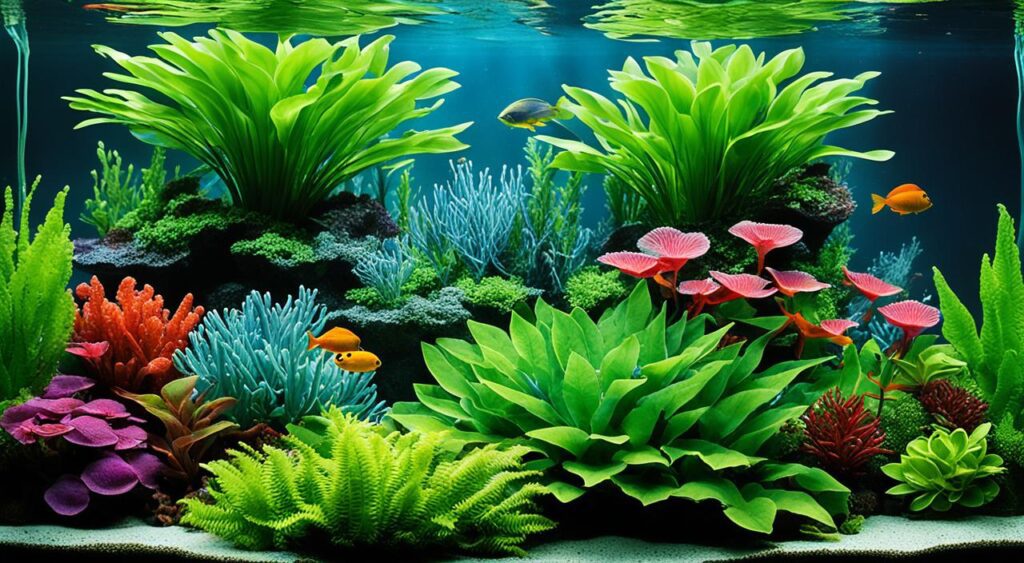
Conclusion: Embracing the Aquatic Lifestyle
As you reach the end of your aquarium setup journey, take a moment to reflect on the valuable knowledge and experiences you have gained. You have embarked on a fascinating adventure of owning an aquarium and caring for the wonders of aquatic life.
Embrace the joy that comes with being an aquarium enthusiast. Watching your fish swim gracefully, observing the vibrant colours of underwater plants, and listening to the soothing sound of water can bring serenity and tranquillity to your daily life. Your aquarium is a beautiful addition to your home and a gateway to a miniature underwater paradise.
Remember, your journey doesn’t end here. The world of aquarium keeping is vast and ever-evolving. Expand your knowledge and passion by engaging with fellow enthusiasts through online forums and local clubs. Share your experiences, seek guidance, and be inspired by the diversity and creativity within the aquarium community.
Enjoy the fruits of your labour and the mesmerizing beauty of your aquarium. Embracing the aquatic lifestyle allows you to cultivate a deeper appreciation for the wonders of nature and the delicate balance of underwater ecosystems. May your aquarium bring joy, relaxation, and a connection with the aquatic world.

